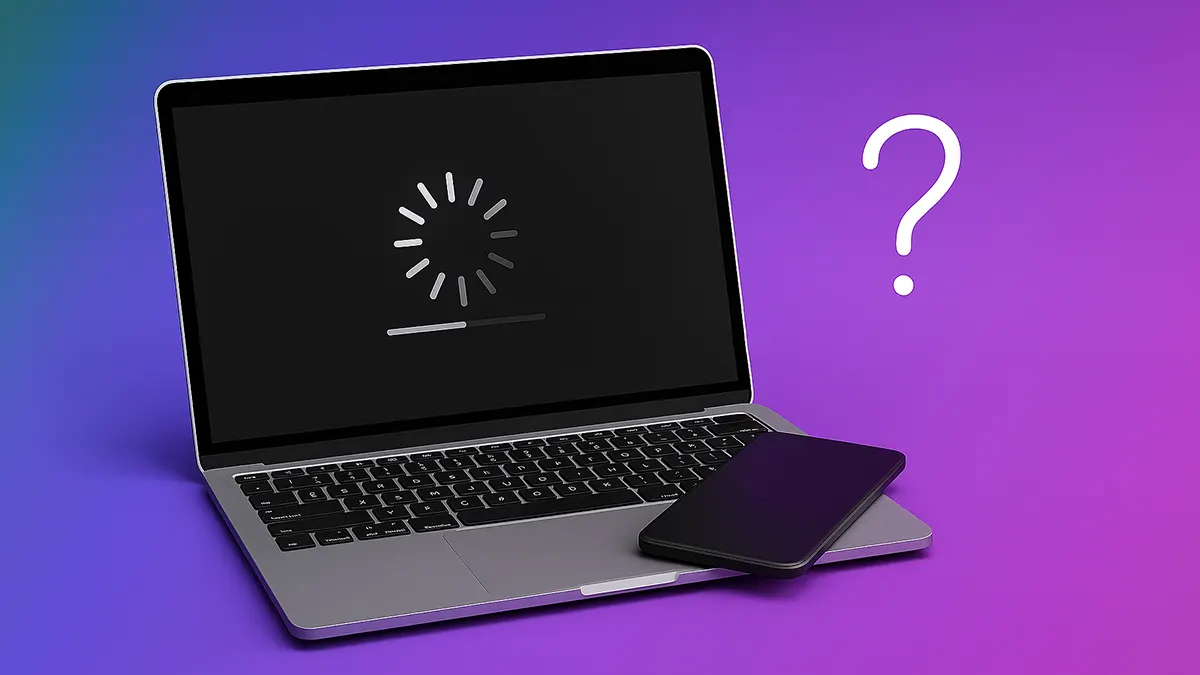What to do if your MacBook is not updating

Your MacBook® has been asking you to update for days—but when you finally try, nothing happens. Maybe the update gets stuck or won’t even start. Either way, you’re not alone, and there are a few easy ways to get things moving again.
At Asurion, we help people fix frustrating tech problems every day—from software issues to slow performance. Here’s what to do if your MacBook won’t update properly.
Make sure your Mac is compatible
First, check that your Mac is eligible for the update.
- Click the Apple® menu > About This Mac
- Check your model and macOS version
- Visit Apple’s support site to see if your model supports the latest version
If your Mac is too old, it may not support newer macOS updates.
Restart your Mac
Sometimes all it takes is a reboot.
- Click the Apple menu
- Select Restart
- Once it reboots, go to System Settings > General > Software Update and try again
Check your internet connection
macOS updates require a stable, fast connection.
- Connect to a reliable Wi-Fi network
- If the update is large, consider using a wired Ethernet connection
- Restart your router if speeds seem slow
Free up storage space
Your Mac needs available storage to install updates—often 15 GB or more.
- Go to Apple menu > System Settings > General > Storage
- Check how much space is available
- Delete large files or move them to iCloud® or an external drive
Need tips? Here's how to free up storage space on your Mac.
Try Safe Mode
Booting into Safe Mode can bypass update errors.
- Shut down your Mac
- Turn it on and immediately press and hold the Shift key
- When you see the login screen, release the key
- Try the update again from System Settings > Software Update
Update with macOS installer
If the update still won’t install:
- Visit the macOS downloads page
- Download the installer for your version
- Open the file and follow the prompts to update manually
FAQ
Why won’t my MacBook update?
It could be due to a lack of storage, slow internet, an unsupported model, or a software glitch. Restart your Mac and try again.
How much space do I need to update macOS?
It depends on the update, but you should have at least 15–20 GB of free space available.
Can I cancel a macOS update if it’s stuck?
If the update is frozen, force restart your Mac by holding the Power button until it shuts off. Then try restarting in Safe Mode.
Will updating macOS delete my files?
No. Updates keep your apps, files, and settings intact. It’s still a good idea to back up your Mac before installing major updates.
What if my Mac still won’t update?
If none of these steps work, there may be a deeper software issue. Our experts can help—visit a uBreakiFix® by Asurion for a free device diagnostic.
The Asurion® trademarks and logos are the property of Asurion, LLC. All rights reserved. All other trademarks are the property of their respective owners. Asurion is not affiliated with, sponsored by, or endorsed by any of the respective owners of the other trademarks appearing herein.